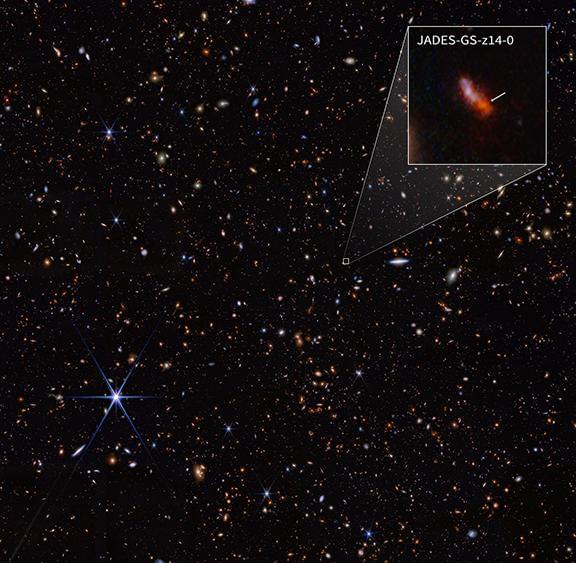An international team of astronomers today announced the discovery of the two earliest and most distant galaxies ever seen, dating back to only 300 million years after the Big Bang. These results, using NASA’s James Webb Space Telescope (JWST), mark a major milestone in the study of the early universe.
The discoveries were made by the JWST Advanced Deep Extragalactic Survey (JADES) team. Daniel Eisenstein from the Center for Astrophysics | Harvard & Smithsonian (CfA) is one of the team leaders of JADES and Principal Investigator of the observing program that revealed these galaxies. Ben Johnson and Phillip Cargile, both Research Scientists at CfA, and Zihao Wu, a Harvard Ph.D. student at CfA, also played important roles.
Because of the expansion of the universe, the light from distant galaxies stretches to longer wavelengths as it travels. This effect is so extreme for these two galaxies that their ultraviolet light is shifted to infrared wavelengths where only JWST can see it. Because light takes time to travel, more distant galaxies are also seen as they were earlier in time.










Leave a reply